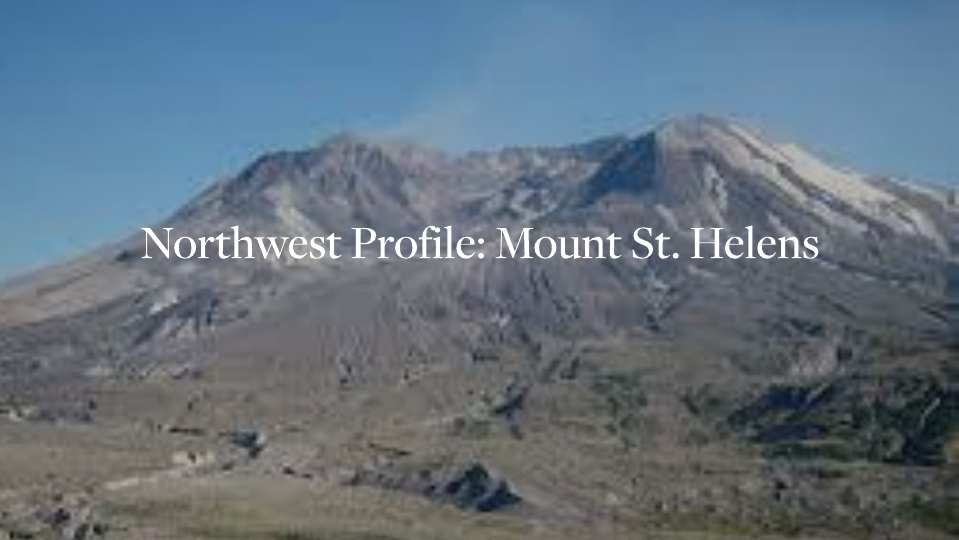
Northwest Profile: Mount St. Helens
Unleashing Nature's Fury: The Catastrophic Mount St. Helens Eruption
On a tranquil spring morning in 1980, the Pacific Northwest of the United States was jolted awake by one of the most devastating natural events in modern history - the eruption of Mount St. Helens. Located just 45 minutes from Olympia, this once volcano roared back to life after decades of dormancy, leaving an indelible mark on the landscape and forever changing the lives of those in its vicinity.
The Buildup
Mount St. Helens had been dormant for over a century before signs of reawakening emerged in March 1980. Earthquakes and small eruptions signaled the ascent of magma beneath the volcano, triggering concerns among scientists and local residents alike. However, the magnitude of the disaster that awaited them was beyond their darkest fears.
The Eruption
On May 18, 1980, Mount St. Helens unleashed a force equivalent to 1,500 Hiroshima atomic bombs, making it one of the most violent volcanic eruptions in recorded history. The eruption began with a colossal landslide, triggered by the collapse of the volcano's northern flank. This catastrophic event rapidly depressurized the magma beneath, leading to a lateral blast that tore through the landscape at speeds exceeding 300 miles per hour (480 kilometers per hour).
The eruption sent a massive column of ash, steam, and volcanic debris soaring into the atmosphere, reaching a height of 80,000 feet (24,000 meters). The skies darkened for hundreds of miles, and ash clouds circled the globe, affecting weather patterns and air travel for days. The ashfall impacted regions as far as eastern Canada, leaving behind a trail of destruction and devastation.
Immediate Impact
The immediate impact of the Mount St. Helens eruption was harrowing. Entire forests were obliterated within minutes, and the once-pristine Spirit Lake was buried under debris and volcanic ash. Fifty-seven people lost their lives, including geologist David A. Johnston, who famously radioed in, "Vancouver! Vancouver! This is it!" moments before the blast claimed his life.
The eruption also caused significant damage to infrastructure, including roads, bridges, and power lines, crippling transportation and communication networks in the region. The surrounding towns and cities were blanketed with thick layers of ash, which caused respiratory issues and severely impacted agriculture and livestock.
Environmental Aftermath
The environmental aftermath of the eruption was equally devastating. An estimated 230 square miles (600 square kilometers) of lush forest was reduced to a barren wasteland, with rivers choked with sediment and debris. The once-teeming wildlife, including elk, deer, and smaller creatures, were almost entirely wiped out in the blast zone.
Despite the bleakness, nature showed its resilience. Within weeks of the eruption, scientists discovered the first signs of life in the form of plant shoots sprouting from the volcanic ash. In the years that followed, life began to gradually reclaim the barren landscape, with new vegetation, wildflowers, and small animals gradually returning.
Today, Mount St. Helens serves as a living laboratory, reminding us that even in the face of overwhelming destruction, life has a remarkable capacity to rebound and thrive once again. As we continue to study and learn from this awe-inspiring event, we are reminded of the importance of respecting and protecting our fragile planet.
Visiting Mount St. Helens offers not only a chance to witness the power of nature but also an opportunity for unique and unforgettable experiences. Here are three cool things to do at Mount St. Helens:
Johnston Ridge Observatory
One of the most compelling experiences at Mount St. Helens is visiting the Johnston Ridge Observatory. Located just a few miles from the crater, this observatory provides a stunning panoramic view of the volcanic landscape. Here, visitors can learn about the eruption's history, geological processes, and the incredible recovery of the surrounding ecosystem through interactive exhibits and informative ranger-led programs. The observatory also offers telescopes and binoculars for a close-up view of the crater and the chance to spot wildlife, including mountain goats and elk, thriving in the recovering wilderness.
Ape Cave Lava Tube
Explore the underworld at Ape Cave, one of the longest lava tubes in North America. This unique geological feature was formed during previous eruptions when lava flowed through the underground tunnel, leaving behind a fascinating cave. There are two sections of Ape Cave—the Upper Cave and the Lower Cave—each providing a different level of challenge and exploration. The Lower Cave is more accessible and suitable for families, while the Upper Cave offers a more adventurous experience with narrow passages and lava formations. Make sure to bring sturdy footwear, headlamps, and warm clothing as the cave is dark, cold, and sometimes damp.
Spirit Lake
Take a journey to Spirit Lake, which gained infamy during the 1980 eruption when it was buried under a massive landslide. Today, the lake has become a symbol of nature's resilience and the remarkable ability of life to rebound. The lake has slowly rejuvenated and now offers picturesque views of the surrounding landscape. Visitors can explore the shoreline, fish in the crystal-clear waters, or go kayaking and canoeing on the serene lake surface. The beauty of Spirit Lake, coupled with its volcanic history, provides an awe-inspiring experience that highlights the profound changes that occurred during and after the eruption.
These cool activities at Mount St. Helens offer a mix of educational insights, adventure, and natural beauty, making it a destination not to be missed for nature enthusiasts, outdoor adventurers, and anyone looking to witness the incredible forces that shape our planet. The eruption of Mount St. Helens stands as a stark reminder of the raw power of nature and its ability to shape and reshape our planet. Although the disaster resulted in unimaginable destruction, it also became a catalyst for scientific understanding and the discovery of nature's resilience.

